Sowing Seeds on Rocky Soil
My grandfather, Kenneth Orville Holloway ("Kenny") worked at the Hanford Engineer Works in Richland, Washington, where he died suddenly at the age of 35. Other than a sketchy outline of his life, I knew almost nothing about him as a person or his work at "the atom bomb factory." Starting with a handful of fragmentary family stories and a couple of online subscriptions, I took the first steps toward unraveling his story. This is the first installment in a biographical series on him.
Sometime around 1917 a recently-married couple from Oregon left everything behind to start a family in Phoenix, Arizona. Why they chose this alien place is not clear. Salem, where the bride was from, was built on the banks of the Willamette River, nestled in a lush valley surrounded by redwoods and small agricultural communities. It had a four-season climate. Phoenix lay deep within the Sonoran Desert, home to cacti, scorpions, and coyotes. Summer temperatures averaged well over 100 ° F. Both Salem and Phoenix were small towns of about 100,000 but Phoenix was booming. Salem's boom had come and gone ten years earlier. Adding to the strangeness of the climate and scenery, no friends or family greeted the couple at their arrival. They were on their own.
Isolation may have been what the couple was after. The 33 year-old groom, Elmer Holloway ("Elmer"), had left his large, established family in Indiana some time earlier. Neither his departure nor his arrival in Oregon are documented in the public record. Nor did Elmer have any family in Oregon, although an uncle did live in Washington state. By the time of his marriage to Eva Blinston of Rosedale, Oregon, Elmer claimed to work as a farmer in the remote Oregon community of Gateway.
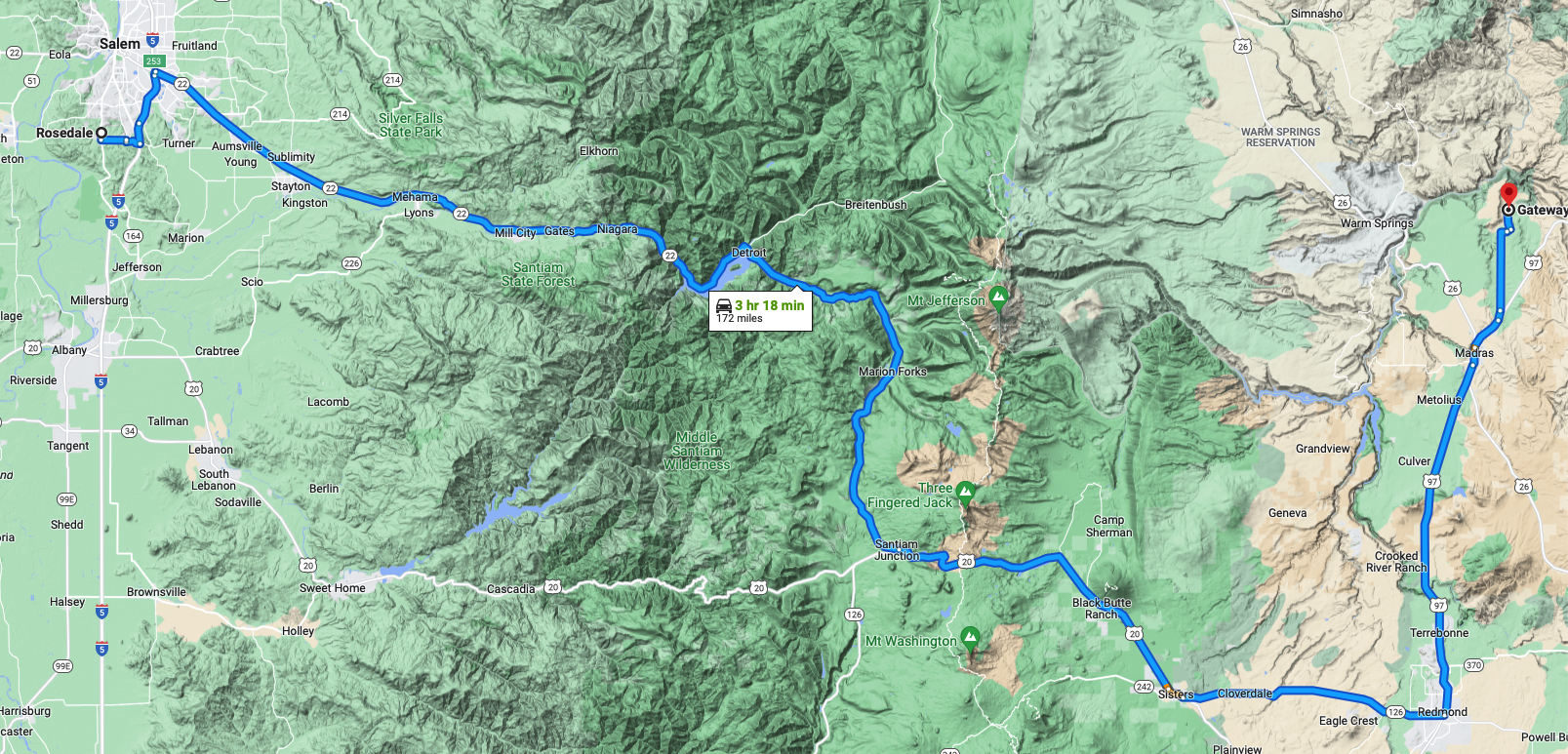
How the couple met is a mystery. Gateway and Salem are separated by 50 linear miles and the Cascade Range of mountains. No highway or rail line directly connects the two places. Travel between them would have required a 2,000 foot climb and descent. Oregon newspapers leave no record of club, school, business, friends, or political affiliations that would have brought Elmer to Rosedale or the Salem area.
Adding to the geographical separation, the couple appeared to have little in common socially or economically. Elmer's bride, 20 year-old Eva Loretta ("Eva") was the second-youngest daughter of Albert M. Blinston ("A. M. Blinston," "Albert"). The Blinston family patriarch had arrived in the Salem area in the late 1880s where he'd gone on to build a diversified farm business centered on prune growing and drying in Rosedale, Oregon. He served as the supervisor of a county road district (Marion County No. 75), and was a local Socialist politician. In contrast, Albert's new son-in-law appeared to be dirt poor. If Elmer Holloway owned a business or property, did anything noteworthy whatsoever, or received money from his family, there's no record of it.
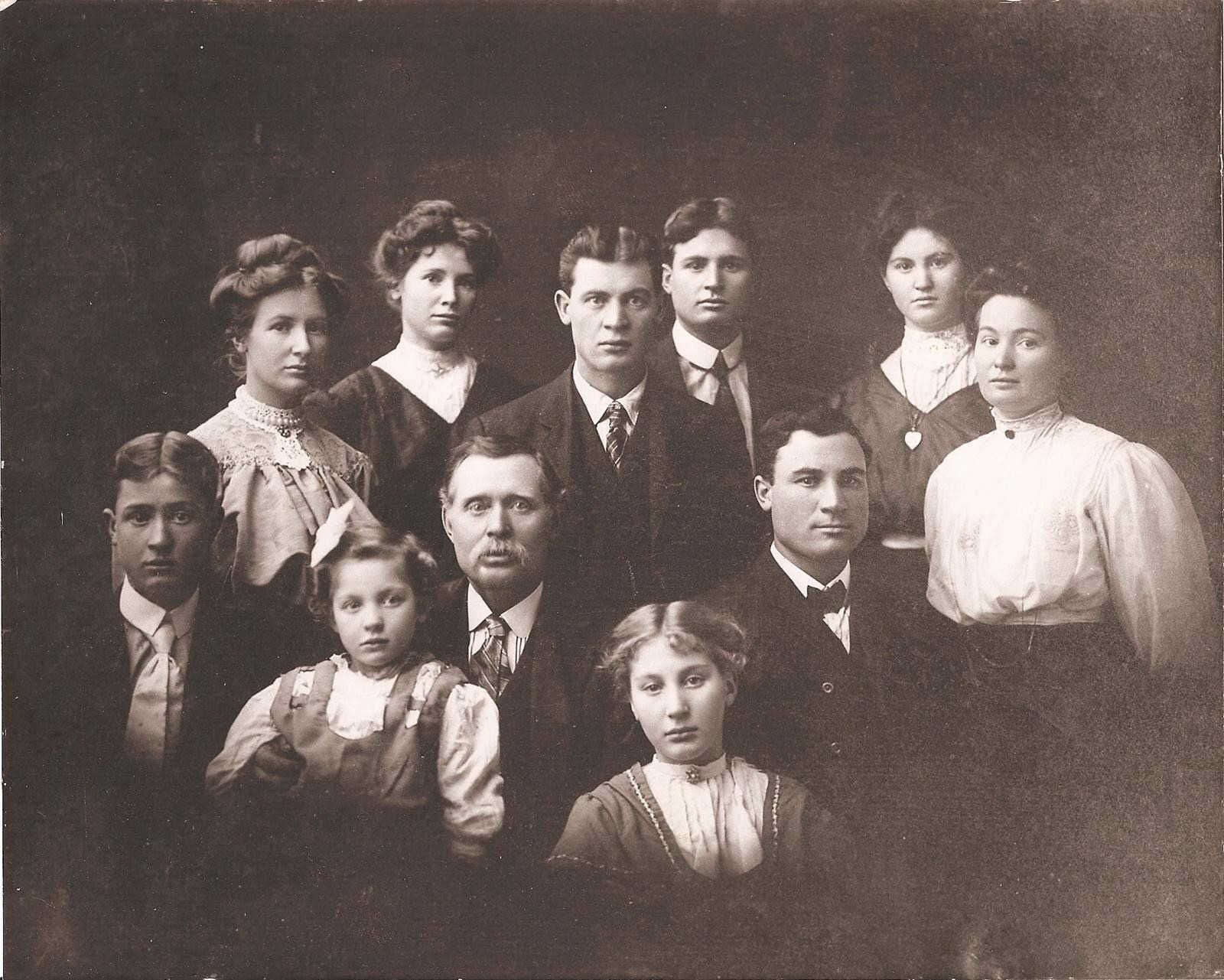
It's possible that Elmer worked as a manual laborer on the Blinston farm where he and Eva met. But this path to meeting just raises more questions.
Regardless of how they met, the couple's marriage appears to have been less than tidy. Two conflicting reports of the ceremony appear in the public record. The first is a newspaper article (The Capital Journal March 21, 1916), which states:
Rosedale, Ore., Mar. 21.—Miss Eva Blinston and Mr. Holloway were married at the home of Mrs. Needham [Clara Blinston, Eva's sister], on March 15. Mr. C.A. Hadley performed the ceremony. Mr. and Mrs. Holloway will live in Arizona.
The second report is the Return of Marriage. This rectangular piece of paper, issued and held by Oregon counties, records information about the couple and the marriage ceremony. The only signatures at the bottom of Eva and Elmer's Return of Marriage are by the county clerk (Gehlbar) and his deputy (Boyer), implying that Boyer performed the civil ceremony. There is no mention of a C.A. Hadley. Furthermore, the location of the marriage, "Salem Rt 4 Bx 37," would later be associated with a government building.
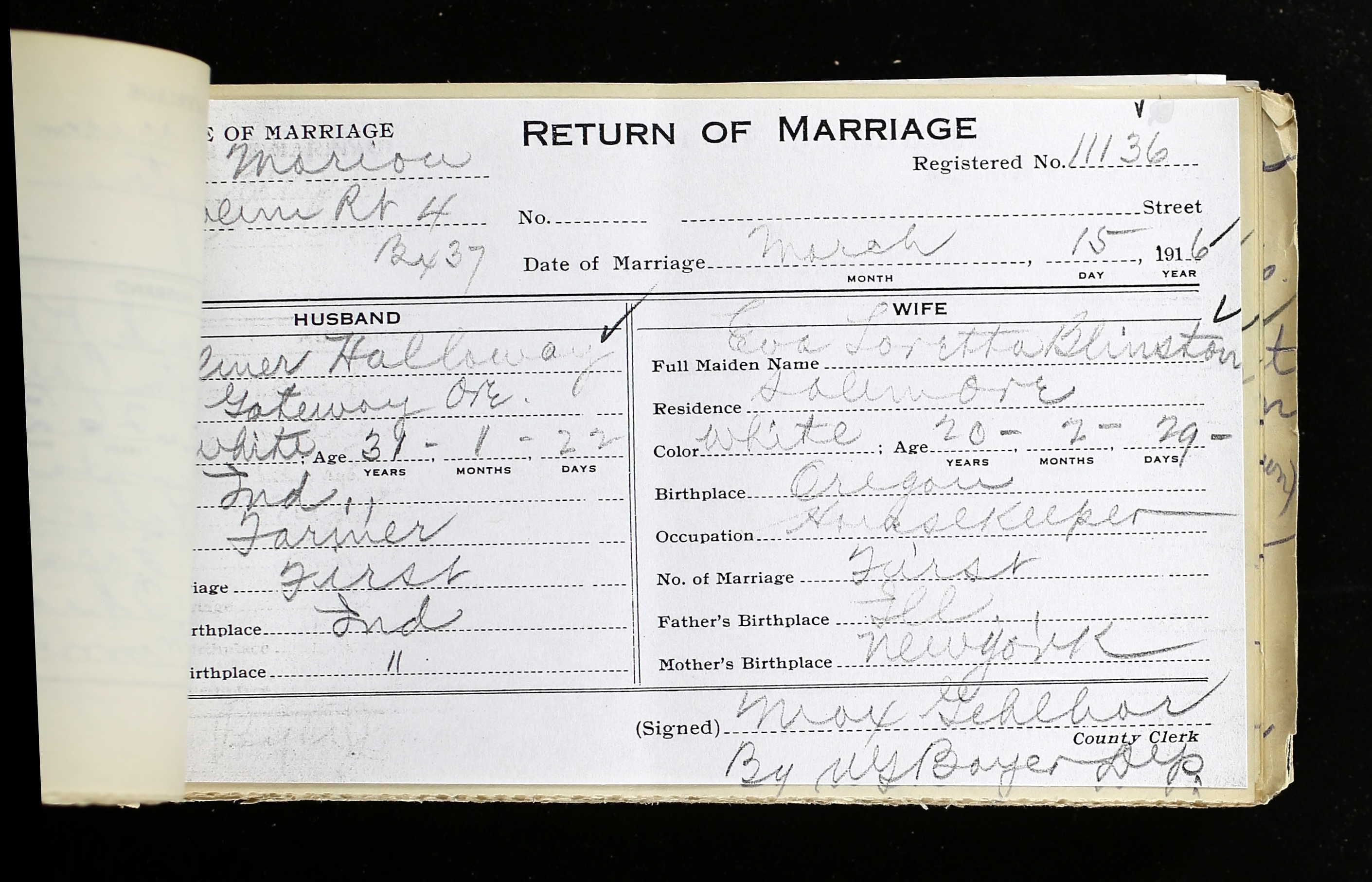
If Eva and Elmer married with anything but the full blessing of Albert, the couple may have wanted to avoid him for a while. Phoenix would put a lot of distance between the couple and the bride's father.
There's another reason why the couple might have left Salem to live in Phoenix: Tuberculosis. Eva would eventually die of the disease in 1923 at the age of 26. It's possible that by the time of her marriage, Eva had contracted the disease and was suffering from symptoms.
According to the CDC:
Tuberculosis (TB) is caused by a bacterium called Mycobacterium tuberculosis. The bacteria usually attack the lungs, but TB bacteria can attack any part of the body such as the kidney, spine, and brain. Not everyone infected with TB bacteria becomes sick. As a result, two TB-related conditions exist: latent TB infection (LTBI) and TB disease. If not treated properly, TB disease can be fatal.
Tuberculosis was viewed as a major public health problem in 1917. One concern was that rapid spread in the US would interfere with the effort to raise an army to fight WWI. In 1917, the French army had already discharged 150,000 men due to the disease. At a medical conference on the disease, one speaker advocated the forced separation of newborn children from their TB-infected mothers.
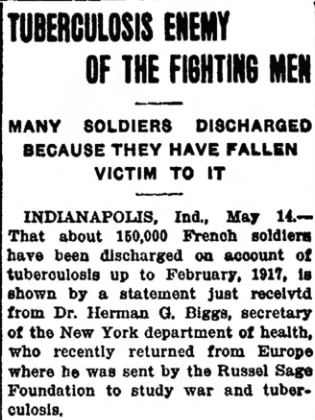
As is often the case with incurable diseases, there were many treatments, all of them ineffective. One idea involved moving the patient to a hot, dry climate, and Arizona was a popular destination for this. Doc Holiday, one of the group of men present at the famous shootout at the O.K. Corral, suffered from TB, having moved to the Arizona desert to manage his symptoms.
Migration to Arizona by TB patients was so common that it became a major driver of Arizona Territory's rapid population growth and later entry into the US as the 48th state. Sanitoria sprang up across the state, often specializing in treating those from particular socioeconomic backgrounds.
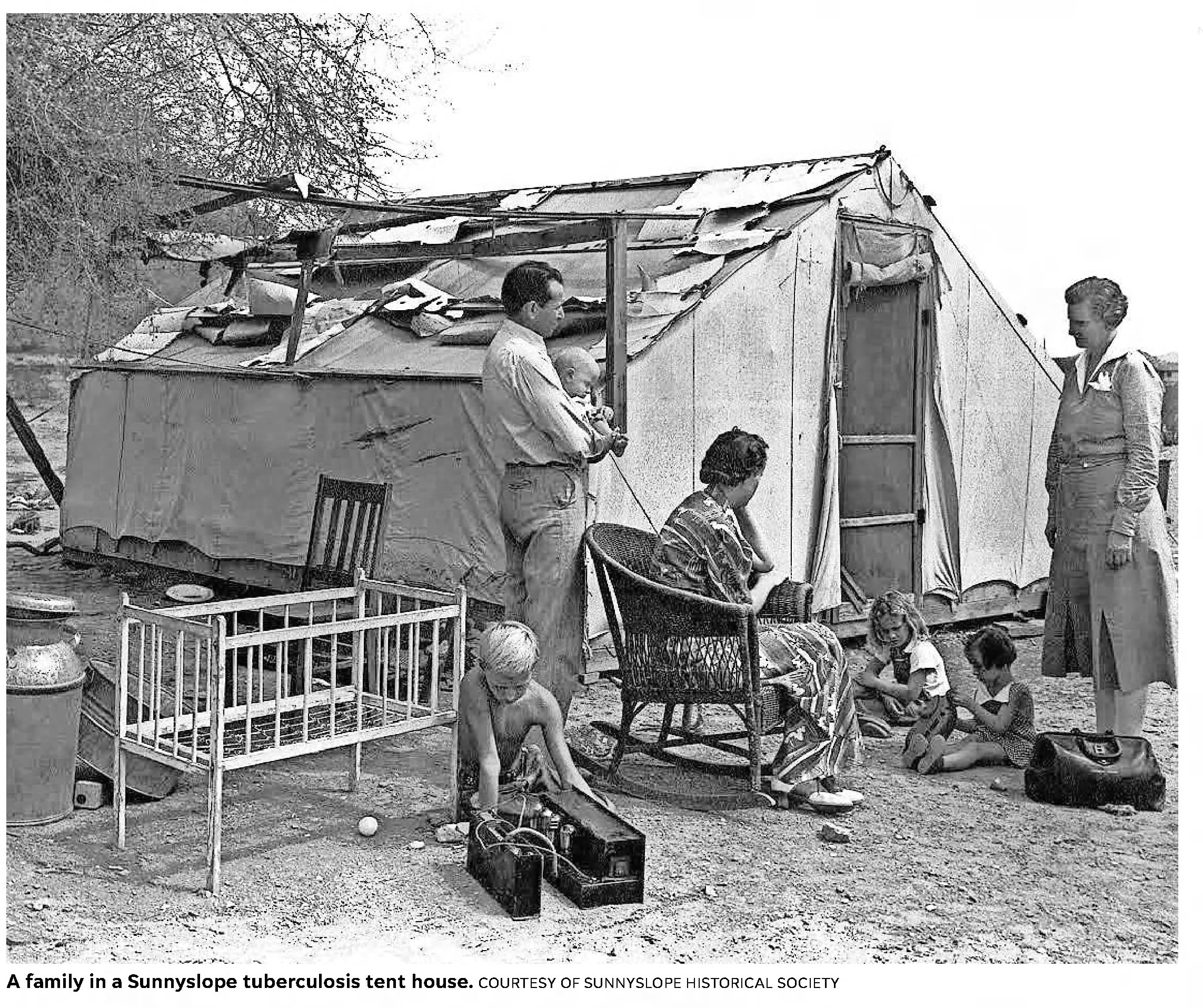
By 1917, TB sanitoria could be found throughout the country. Oregon even had one, the Oregon State Tuberculosis Hospital in Salem. Wikipedia reports that the first five patients were admitted in late 1910. It's possible that Eva was a patient there but treatment didn't go well. This may have convinced the couple to take a chance on the warmer, drier climate of Phoenix.
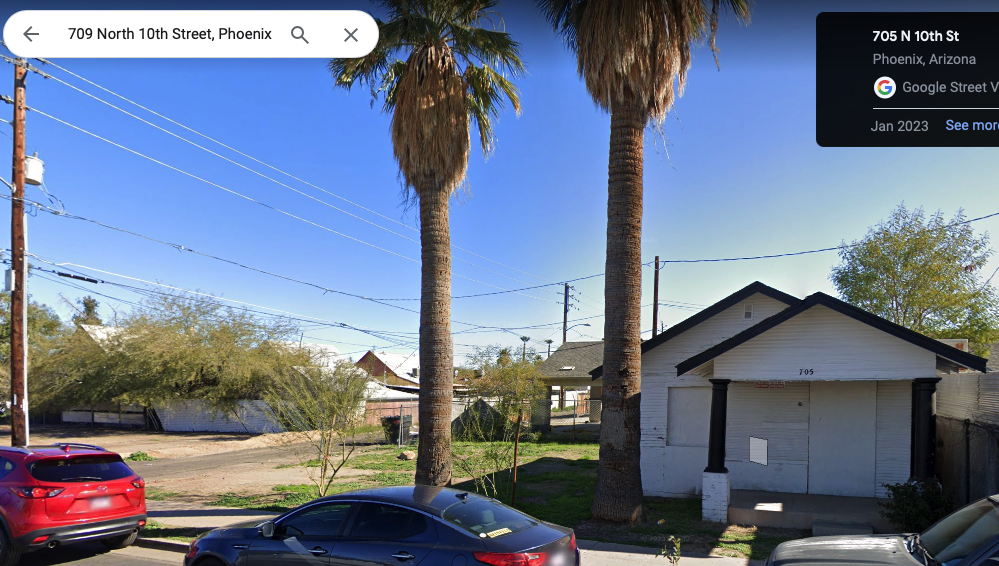
According to the Phoenix City Directory, Elmer and Eva moved into a three-room cottage at 709 N 10th. Later classified ads indicated that it was partly furnished and was located on a "Brill car line.". According to Wikipedia, Brill was part of a street railway that served Phoenix starting in 1888. The house on N 10th has since been leveled, but the decaying remains of another house at 705 N 10th are still standing.
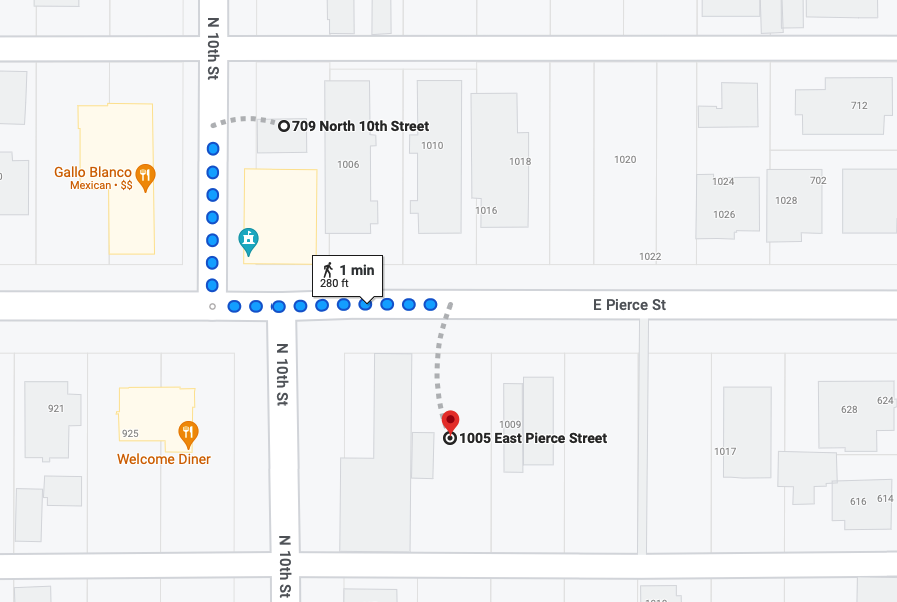
In addition to its proximity to a rail stop, the house on N 10th was convenient for another reason: a short walk to work. The City Directory lists Elmer's occupation as "grocer" at 1005 E Pierce. Phoenix classified ads suggest that the name of this business was "McDougal & Smith." It was a grocery store and gas station, selling "Red Crown Casoline." The business was not prosperous, and would soon be offered for sale through a series of increasingly desperate classified ads.
On June 30, 1917, Eva Holloway gave birth to the couple's first child, Kenneth Orville, at St. Joseph Hospital. No announcement was made in the local newspaper, but one was made in Salem.
In 1918, Elmer started working as a truck driver for the Bennett Lumber Company. He, Eva, and Kenny would then move to a nicer home at 714 W McKinley. The property is currently a 4-plex, but classified ads suggest that at the time Holloways lived there it was one house with a yard at least large enough to accommodate a milk goat.
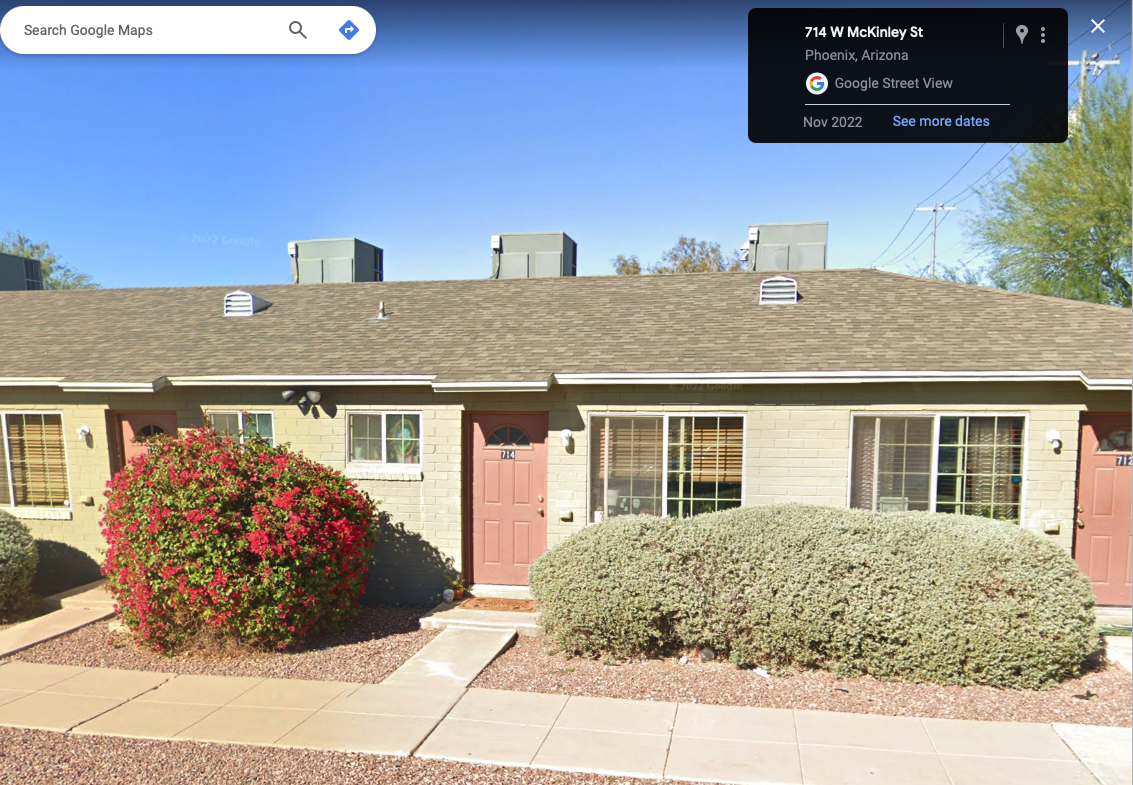
With a young child and no relatives to share in the work or joy, Eva may have had begun to have second thoughts about living over 1,000 miles from her own family. The Capital Journal, Salem's local newspaper, reported that in June of 1918 Eva made "an extended visit at the home of her father, A. M. Blinston." The article doesn't mention Elmer or Kenny, so it's possible that Eva traveled alone.
One year later on June 9, 1919, Eva Holloway gave birth to the couple's second child, Dorothy May.
In 1920, Elmer became a driver for the O'Malley Lumber Company, which had been operating in Phoenix since 1909. It's possible that this job took Elmer to Oregon. An advertisement in the Arizona Republican of May 25, 1919 implored O'Malley's customers to stock up on Oregon Pine before prices increased due to healthy demand.
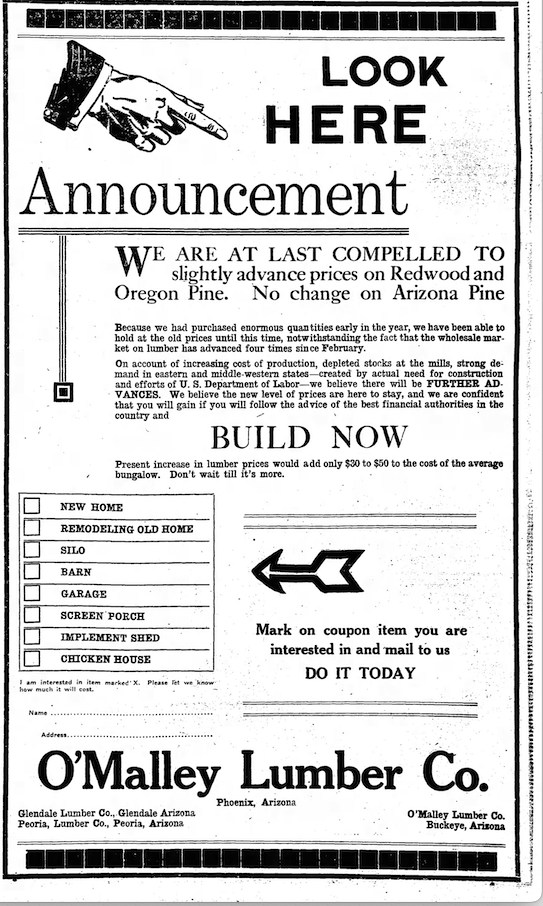
It's not clear what led them to do so, but in the spring of 1921, Elmer and Eva packed up everything and left town. They headed to Salem, where they moved into 1363 No. 17th St. Elmer became a logger.
One factor behind the departure from Phoenix could have been Eva's health. In November 1922, Eva sought treatment from Dr. Ray Pemberton for tuberculosis. Her symptoms had apparently progressed.
Another factor could have been the declining mental health of Eva's father, Albert. In 1919 a probate court had declared a guardianship for him on the basis of insanity. He would eventually be committed to Oregon Hospital for the Insane, (aka "Oregon State Hospital") a facility I'll come back to later.
On March 11, 1923 Eva Blinston died at home from pulmonary tuberculosis. Within the span of just seven years, Elmer had gone from being a drifter farm worker to a single father raising two young children. Kenny was a few months shy of his sixth birthday.